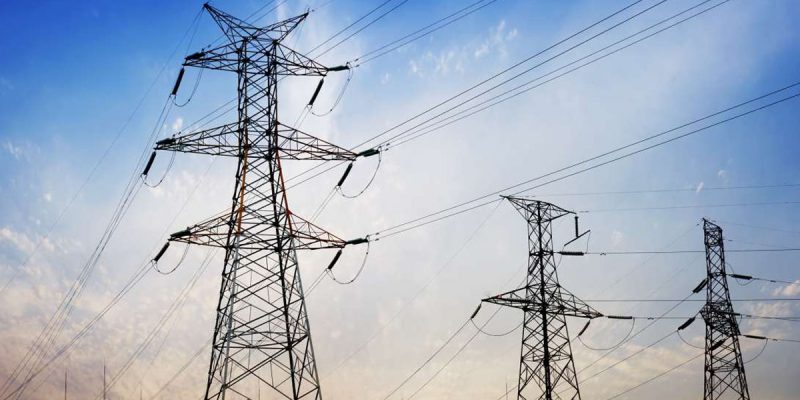The current system of federal energy oversight, embodied by the Department of Energy (DOE), the Federal Energy Regulatory Commission (FERC), and overlapping agencies like the Environmental Protection Agency (EPA) and Nuclear Regulatory Commission (NRC), concentrates excessive authority in Washington, D.C., largely at the expense of state independence in such issues.
Established in response to 1970s energy/oil crises, these federal agencies have grown into massive bureaucracies that trample on federalism’s core principle: that states are best positioned to address local needs. Reflecting in the adage that ‘the mountain is high, and the emperor is far away’. We should take the opportunity to modify energy governance to reduce federal control, empower states, and foster innovation, while making sure that we provide for interstate and security-related energy issues.
Consider the 10th Amendment of the US Constitution:”The powers not delegated to the United States by the Constitution, nor prohibited by it to the States, are reserved to the States respectively, or to the people.”
By restructuring or eliminating largely unnecessary agencies the President can streamline government, and promotes a resilient, state-led energy future.
Brought Forth by The Democrats
The DOE created in 1977 during the administration of President Jimmy Carter, sought to address the 1973 oil embargo’s fallout, but also modified the federal government in such a way to consolidate federal power and to harm the states and negatively impact federalism.
The FPC, established in 1920, regulated interstate electricity and hydroelectric projects, but in a balanced federalist approach. The FERC, also created in 1977, replaced the FPC as an independent agency within the DOE’s orbit, overseeing interstate electricity and natural gas markets. These agencies emerged from a desire for federal coordination during “crises” but evolved into centralized entities, frequently overriding state priorities.
This centralization of federal agencies and power has strained federalism, as states like Texas, with deregulated electricity markets, or California, with ambitious renewable goals, face federal mandates that conflict with local conditions. Historical attempts to reduce federal overreach, such as President Reagan’s 1980s effort to abolish the DOE, demonstrate a continuing need for a redesign that restores state authority.
Let’s Say You Want To Be Critical
- Department of Energy (DOE)
- Centralized Control: The DOE’s broad mandate—energy policy, R&D, nuclear security, and cleanup—imposes federal priorities on states.
- Overlap and Inefficiency: The DOE’s R&D overlaps with the National Science Foundation (NSF), its environmental cleanup with the EPA, and its nuclear security with the Department of Defense (DOD).
- Federalism Impact: The DOE’s grants and regulations, like prior renewable energy mandates, encroach on state authority, forcing states like Wyoming to navigate federal rules to commit to massive changes in generation despite their geologic fuel economies. This undermines federalism’s principle of subsidiarity, where local governments are best suited to address local needs.
- Federal Energy Regulatory Commission (FERC)
- Interstate Oversight: FERC’s role in regulating wholesale electricity markets, interstate transmission, and pipelines is critical but often oversteps into areas states could manage.
- Centralized Authority: FERC’s approval of infrastructure projects limits state autonomy, creating tension with federalism.
- Bureaucratic Burden: FERC’s $500 million budget and complex regulatory processes slow innovation, such as approving new transmission lines for integration, which the states could expedite locally.
- Other Agencies (EPA, NRC, Department of the Interior)
- EPA: Its environmental regulations, like the Clean Power Plan, overlap with DOE’s clean energy programs, creating duplicative issues for states. (eg. West Virginia’s coal industry versus federal standards.)
- NRC: The NRC’s nuclear safety oversight is essential but overlaps with DOE’s nuclear R&D, as seen in small modular reactor (SMR) licensing delays. States like Utah, partnering with manufacturers, face federal hurdles that slow deployment.
- Interior Department: Its management of federal lands for energy (e.g., hydroelectric dams) intersects with DOE and FERC, yet states like Idaho manage local energy projects more efficiently, suggesting a need to end federal interference.
How Can We Protect Federalism?
Take the bold step that President Reagan attempted and abolishing the DOE, redefine FERC as a leaner coordinating body, and redistributing other agency functions to states, existing federal entities, and the private sector. The redesign prioritizes state autonomy and less federal intervention, with options for interstate coordination and national security.
- End the Department of Energy
- Rationale: Started out of a panic over oil that no longer exists. Just a reminder. The DOE’s sprawling expansive federal mandate is duplicative and clearly undermines state authority. Its $45 billion budget could be redirected to states and leaner agencies, saving $10–15 billion annually in administrative costs. Or just cut.
- Modified Responsibilities:
- Energy Policy: If there are projects that are purely intrastate then provide block grants to states for their local solutions. FERC would handle interstate coordination only.
- R&D: Transfer research and development to the NSF and private sector partnerships
- Nuclear Security: Have the DOD handle the nuclear weapons programs.
- Environmental Cleanup: Transfer appropriately to either the EPA or state agencies, reducing costs and empowering states.
- Positive Impact: Eliminates federal overreach, empowers states to craft energy policies aligned with local resources and needs, respecting the Tenth Amendment.
- Make the FERC Lean
- New Role: Redefine the FERC into a smaller, independent agency focused solely on interstate electricity and natural gas markets, grid reliability, and dispute resolution. Ban impacts on federalism.
- Streamline Other Agencies
- NRC: Maintain nuclear safety oversight but streamline licensing for advanced reactors as we have laid out in other suggestions for Moore.
- Impact: Clarifies roles, reduce duplication and empower states to lead and energy project decisions.
What Good Develops?
- Enhanced Federalism: Restores state autonomy by devolving federal energy policy, respecting the Tenth Amendment and local expertise.
- Reduced Costs: Likely saves billions annually by eliminating DOE’s bureaucracy and streamlining FERC, redirecting funds to states and taxpayers.
- Increased Efficiency: Eliminates overlap (e.g., DOE-EPA, DOE-NRC), accelerating electricity projects.
A Matter Most Political
What exactly do we do? First would be an Executive Order from President Trump establishing a path. But eventually Congress would have to pass legislation. Something like a “Federal Energy Balance Act” to codify changes, ensuring Tenth Amendment compliance and state empowerment.
Surely a massive step, but by redesigning U.S. energy governance through abolishing the DOE and redefining FERC as a lean coordinating body, along with empowering the states; restores federalism’s balance and reduces federal overreach. By streamlining agency roles and prioritizing state autonomy, this proposal aligns with the goals of federalism, saves billions, and ensures a resilient, decentralized energy future. The United States can reclaim its federalist roots, empowering states as laboratories of balanced authority to meet the challenges of accelerating the growth of electricity generating facilities that are in much demand in the United States.
Advertisement
Advertisement

